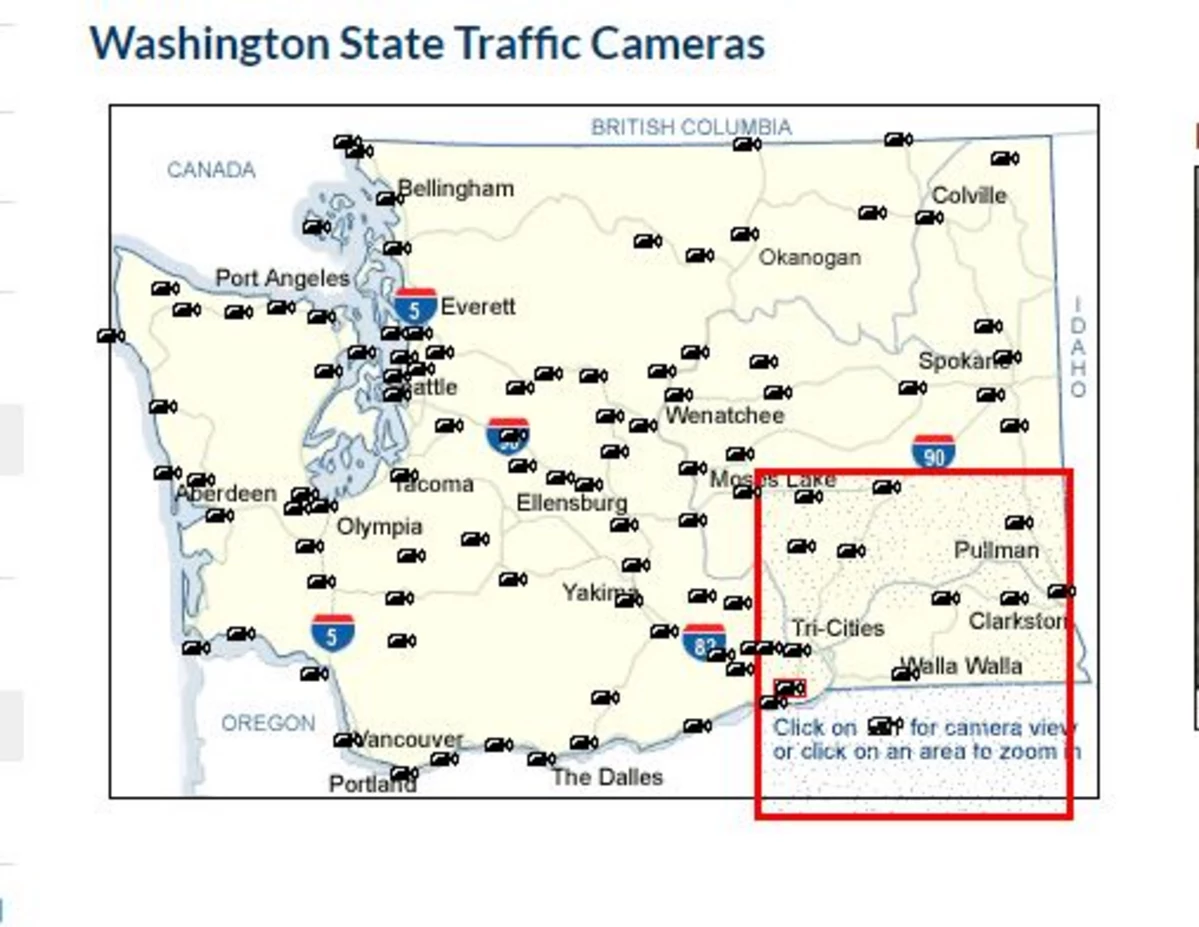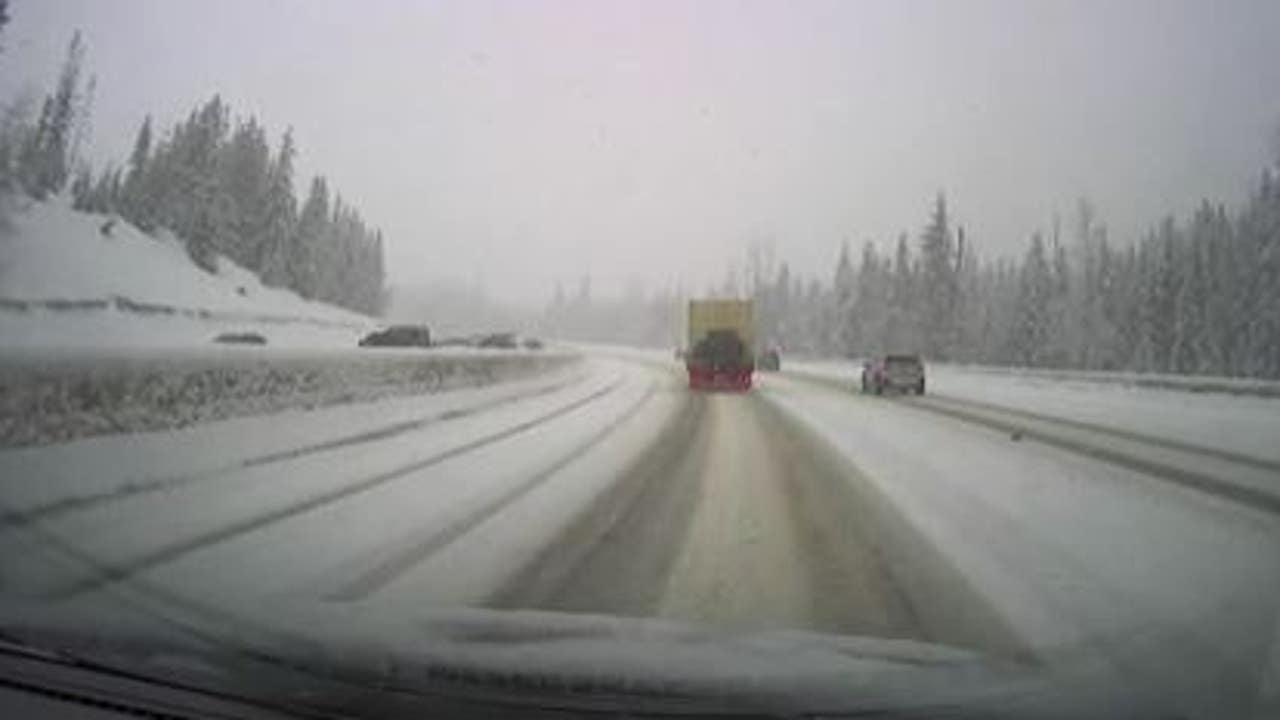Monitoring traffic conditions in Washington State, especially in critical areas like Snoqualmie Pass, has become increasingly important for drivers and commuters alike. With the help of traffic cameras, travelers can now access real-time updates on road conditions, weather, and potential delays. Whether you're a daily commuter or an occasional traveler, understanding how these cameras work and their role in improving road safety is essential.
Snoqualmie Pass serves as a vital transportation corridor connecting Eastern and Western Washington, making it one of the busiest mountain passes in the state. The integration of advanced technology, such as traffic cameras, ensures that drivers receive accurate and timely information to make informed decisions about their journeys. This guide will delve into the significance of Washington State traffic cameras, their functionality, and how they contribute to safer and more efficient travel experiences.
As the demand for reliable traffic updates continues to grow, Washington State Department of Transportation (WSDOT) has invested heavily in modernizing its infrastructure. Through the deployment of traffic cameras at key locations, including Snoqualmie Pass, WSDOT aims to enhance the overall travel experience for all road users. This article will provide an in-depth analysis of these cameras, their impact on traffic management, and practical tips for utilizing them effectively.
Read also:Transform Your Space The Ultimate Guide To Living Room Theatres In Portland Oregon
Table of Contents
- Introduction
- Snoqualmie Pass Overview
- Washington State Traffic Camera System
- Benefits of Traffic Cameras
- Camera Locations in Snoqualmie Pass
- Accessing Real-Time Updates
- Impact on Road Safety
- Weather Monitoring
- Future Developments in Traffic Technology
- Conclusion
Snoqualmie Pass Overview
Snoqualmie Pass is a high mountain pass located in the Cascade Range of Washington State. It serves as a crucial link between Interstate 90 and major cities like Seattle and Spokane. The pass is renowned for its scenic beauty and challenging weather conditions, especially during the winter months. Understanding the geography and significance of Snoqualmie Pass is essential for appreciating the role of traffic cameras in this area.
Key Features of Snoqualmie Pass
Snoqualmie Pass spans approximately 3,022 feet above sea level and is a popular destination for outdoor enthusiasts. However, its strategic importance extends beyond recreation, as it facilitates significant commercial and commuter traffic. The installation of traffic cameras ensures that both drivers and authorities are equipped with the necessary tools to navigate this complex terrain safely.
Washington State Traffic Camera System
The Washington State Department of Transportation (WSDOT) has implemented an extensive network of traffic cameras across the state, with a special focus on high-traffic areas like Snoqualmie Pass. These cameras play a pivotal role in monitoring road conditions, identifying congestion, and providing actionable data to improve traffic flow.
How Traffic Cameras Work
Traffic cameras are equipped with advanced technology that allows them to capture real-time images and video feeds. These feeds are then transmitted to WSDOT's central control center, where they are analyzed and shared with the public through various platforms. The system is designed to be highly reliable, ensuring minimal downtime even in adverse weather conditions.
Benefits of Traffic Cameras
The integration of traffic cameras in Washington State offers numerous advantages for drivers and transportation authorities alike. Below are some of the key benefits:
- Improved Traffic Management: Cameras enable authorities to monitor traffic patterns and implement strategies to reduce congestion.
- Enhanced Safety: Real-time updates help drivers avoid hazardous areas and make informed decisions about their routes.
- Cost-Effective Solutions: By reducing the need for physical patrols, traffic cameras contribute to cost savings for transportation agencies.
Camera Locations in Snoqualmie Pass
WSDOT has strategically placed traffic cameras at various points along Snoqualmie Pass to ensure comprehensive coverage. These locations include:
Read also:Evan Williams The Rising Canadian Actor Taking Hollywood By Storm
- Eastbound and westbound lanes of Interstate 90
- Key intersections and merge points
- Areas prone to weather-related incidents
By positioning cameras at these critical locations, WSDOT ensures that drivers have access to the most relevant and up-to-date information about road conditions.
Accessing Real-Time Updates
Drivers can access real-time updates from Washington State traffic cameras through several platforms:
- WSDOT Website: The official WSDOT website provides live camera feeds and traffic updates for Snoqualmie Pass and other areas.
- Mobile Apps: WSDOT's mobile app offers convenient access to camera feeds and other transportation-related information.
- Social Media: WSDOT frequently posts updates on social media platforms, ensuring that drivers are informed even on the go.
Impact on Road Safety
Traffic cameras have significantly improved road safety in Snoqualmie Pass and surrounding areas. By providing drivers with real-time information about road conditions, these cameras help reduce the likelihood of accidents caused by unexpected hazards. Additionally, authorities can respond more quickly to incidents, minimizing disruptions and ensuring the safety of all road users.
Statistics on Safety Improvements
According to a report by WSDOT, the implementation of traffic cameras has led to a 20% reduction in accidents in monitored areas. This statistic underscores the importance of these cameras in enhancing road safety and underscores the need for continued investment in this technology.
Weather Monitoring
One of the primary challenges of driving through Snoqualmie Pass is dealing with unpredictable weather conditions. Traffic cameras play a crucial role in monitoring weather patterns and alerting drivers to potential hazards. Features such as infrared technology and weather sensors allow cameras to function effectively even in low-visibility conditions.
Advanced Weather Sensors
In addition to capturing visual data, many traffic cameras in Snoqualmie Pass are equipped with advanced weather sensors. These sensors provide detailed information about temperature, precipitation, and wind speed, enabling authorities to issue timely warnings and advisories to drivers.
Future Developments in Traffic Technology
The field of traffic management is constantly evolving, with new technologies emerging to enhance the capabilities of traffic cameras. Some of the most promising developments include:
- Artificial Intelligence Integration: AI-powered cameras can analyze traffic patterns and predict potential issues before they occur.
- Automated Incident Detection: Advanced algorithms enable cameras to detect and report incidents automatically, reducing response times.
- Improved Connectivity: Enhanced connectivity options ensure that camera feeds are accessible to a wider audience, including autonomous vehicles.
As these technologies continue to develop, the role of traffic cameras in improving road safety and efficiency will only grow stronger.
Conclusion
In conclusion, Washington State traffic cameras have revolutionized the way drivers navigate through critical areas like Snoqualmie Pass. By providing real-time updates, enhancing road safety, and monitoring weather conditions, these cameras have become indispensable tools for both commuters and transportation authorities. As technology continues to advance, the potential for further improvements in traffic management remains vast.
We encourage all drivers to take advantage of the resources provided by WSDOT, such as live camera feeds and mobile apps, to ensure a safer and more efficient travel experience. Don't forget to share this article with fellow drivers and explore other informative content on our website. Together, we can make Washington's roads safer for everyone.
For further reading, consider exploring related topics such as winter driving tips, advanced vehicle safety features, and the latest developments in transportation technology. Stay informed, stay safe, and enjoy your journey through Snoqualmie Pass!



